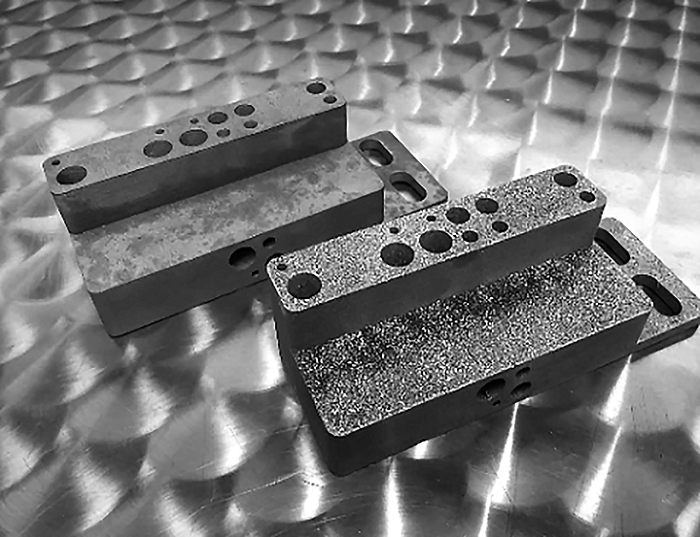ISO 11130 Corrosion Testing of Post-Processed Metallic Materials
The ISO 11130 standard provides a comprehensive framework for the testing and evaluation of the corrosion resistance of post-processed metallic materials. This service is designed to ensure that your products meet stringent quality and reliability standards, enhancing their performance in corrosive environments.
Corrosion testing plays a critical role in the development and validation of metal parts used in sectors such as aerospace, automotive, medical devices, and electronics. By subjecting post-processed metallic materials to controlled corrosion environments, we can identify potential weaknesses and optimize material selection or processing techniques.
The process begins with careful preparation of specimens according to ISO 11130 guidelines. This includes cleaning, conditioning, and applying any necessary protective coatings before exposure to the test environment. Specimen preparation is crucial as it directly impacts the accuracy and repeatability of the results.
After specimen preparation, materials are exposed to one or more corrosive environments for a specified duration. These environments can include salt spray, humidity chambers, artificial seawater, or other relevant conditions that mimic real-world scenarios. The choice of environment depends on the specific requirements set by the customer and the intended application of the material.
During exposure, it is essential to monitor the integrity of the specimens closely. This includes regular inspections for signs of corrosion such as pitting, flaking, or general degradation. Post-exposure analysis involves detailed examination using optical microscopy, scanning electron microscopy (SEM), and other advanced imaging techniques to assess the extent and nature of any corrosion present.
The results from these analyses are then compiled into a comprehensive report that outlines the performance of each specimen under the specified conditions. This report serves as valuable information for improving product design and manufacturing processes, ensuring compliance with regulatory standards, and enhancing overall product reliability.
Applied Standards
| Standard | Description |
|---|---|
| ISO 11130:2006 | This standard specifies the conditions for the immersion of metallic materials in neutral salt solution to determine their resistance to atmospheric corrosion. It is widely used across various industries. |
| ASTM G85-19 | An American Society for Testing and Materials standard that provides a guide for the use of salt spray tests to evaluate the performance of coatings on metal surfaces. It complements ISO 11130 by offering additional insights into coating durability. |
| Procedure | Description |
|---|---|
| Preparation of Specimens | The specimens are cleaned, conditioned, and optionally coated before exposure to corrosive environments. |
| Exposure Conditions | Specimens are exposed to neutral salt solution for a predetermined duration under controlled temperature and humidity conditions. |
| Evaluation Criteria | The extent of corrosion is evaluated using optical and scanning electron microscopy, focusing on pit depth, area, and morphology. |
Quality and Reliability Assurance
The ISO 11130 corrosion testing service is integral to our commitment to quality and reliability assurance. By adhering strictly to the ISO 11130 standard, we ensure that every test conducted meets international best practices and industry expectations.
This service not only helps in identifying potential issues early but also provides actionable insights for continuous improvement. For instance, if a particular coating or post-processing method shows poor performance during testing, our team can work closely with your R&D engineers to refine the process and achieve desired outcomes.
The data obtained from these tests is invaluable for compliance purposes as well. Many industries have regulatory requirements that mandate certain levels of corrosion resistance for their products. Our service ensures that your materials not only meet but exceed these standards, thereby reducing non-compliance risks and potential penalties.
Moreover, the results of ISO 11130 testing can be used to enhance brand reputation by demonstrating a commitment to excellence in product quality. This is particularly important for high-stakes applications like aerospace or medical devices where reliability is paramount.
Competitive Advantage and Market Impact
In today's competitive market, ensuring that your products stand out by meeting the highest standards of quality and reliability can give you a significant edge over competitors. ISO 11130 corrosion testing is not just about compliance; it’s about setting new benchmarks for performance.
By leveraging this service, you can demonstrate to customers that you are committed to delivering top-tier products with proven durability in harsh environments. This enhances trust and loyalty among your customer base, fostering long-term relationships.
The insights gained from ISO 11130 testing can also be used strategically to differentiate your offerings. For example, if a particular alloy or coating consistently performs better than others under similar conditions, you can market this as a unique selling proposition (USP). This differentiation can lead to increased sales and market share.
In addition, the data obtained from these tests can be shared with potential partners and collaborators, showcasing your expertise and reliability. This can open doors to new business opportunities and partnerships that further bolster your competitive position in the market.





